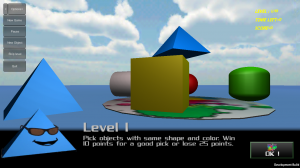VR Experience is now available for iOS:

After the Oculus Rift headset, Google glasses, the Sony Morpheus project, the Samsung Gear VR, the Google cardboard, it’s now time for Microsoft to build a VR headset, as they say, Microsoft HoloLens goes beyond augmented reality and virtual reality by enabling you to interact with three-dimensional holograms blended with your real world.
Created by David Coz, a young French engineer, now employed by Google, the Cardboard kit is a real video gaming revolution:
Inspired by the Oculus Rift, this headset is sold as a DIY (Do It Yourself).
With this cardboard kit you can turn your smartphone into a real 3D immersion tool (or virtual reality). You can assemble this headset yourself very easily.
The kit includes a cardboard box, 2 lenses, two magnets and a rubber band, it will cost between 15 and 25 euros and a few minutes of your time to build one.
Once you have installed your smartphone,you will be able to download several applications of your choice on your Android or iOS smartphone and immerse into it.
The quality is, of course, not as good as the Oculus Rift helmet, but if you have a smartphone it’s really a cheap option if you want to have fun.
Color Match 3D is a color and shape recognition game.
It runs on IOS (iPad, iPhone) and also on PC/Windows and MacOSX and is available on the Apple Store in a Paid version or a Free/sponsored version.
It is aimed at a wide audience aged 4 to 120.
Under its relatively simplistic aspect, this game stimulates several different intellectual functions: recognition of primary colors and simple geometric shapes, reversed spatial memory, analysis, speed decision making but also risk assessment (mistakes make you lose points).

A demo made with the Honey Hex Framework Unity Asset which was modified to input a texture for terrain generation instead of random generation. A few bugs remain and the next step will be to create rivers properly.
Thanks to HoneyHex framework support !
First sketches of characters for a game on the theme of Arthurian legends. All the characters have been designed with Mixamo Fuse.
Main characters:
Merlin Morgane
Viviane
Round table knights:
![]() Palamede
Palamede ![]() Perceval
Perceval
Game Concept
Agon is a strategy board game for two players. It is played on a 6×6 hexagonal gameboard.
It will be running on PC/Windows, Mac OSX and Linux. Later, a version will be adapted for IOS and Android.
It is the oldest board game played on a hexagonally-celled board, and first appeared in France around the 13th century. The game reached its greatest popularity a century later when the Victorians embraced it for its blend of simple rules and complex strategy.
Rules (source Wikipedia) :
Each player has one queen and six guards. Players determine who moves first, then turns alternate. On each turn, a player moves one of his pieces. The object of the game is to be first to maneuver one’s queen to the central hex (the throne) at the center of the board, and surround her with all six of her guards.
Moves
The gameboard may be thought of as a series of concentric rings of hex cells (highlighted by rings of alternating colors). Pieces move one step at a time to an adjacent cell, either sideways in the same ring, or towards the throne to the next ring. The cell moved to must be vacant. Only the queen may move to the throne.
Captures
A piece is captured when two enemy pieces are on adjacent sides of it, in a straight line. The player whose piece is captured must use his next turn to relocate the captured piece:
If more than one piece is captured in a turn, the player whose pieces were captured must move them one turn at a time. If one of the pieces captured was the queen, it must be moved first. If more than one guard was captured, they can be moved in any order.
Additional rules
Variation
The game starts with only queens, in opposite corners of the board. Players place their guards, one per turn, on any vacant board cells (except the throne). After all twelve guards have been placed, the game proceeds under normal rules.